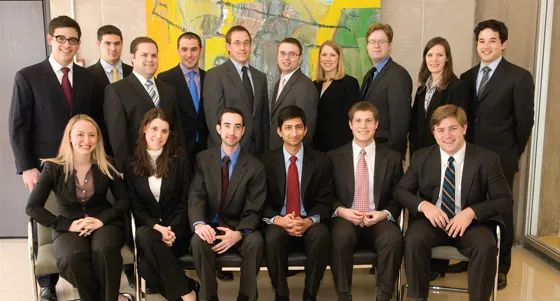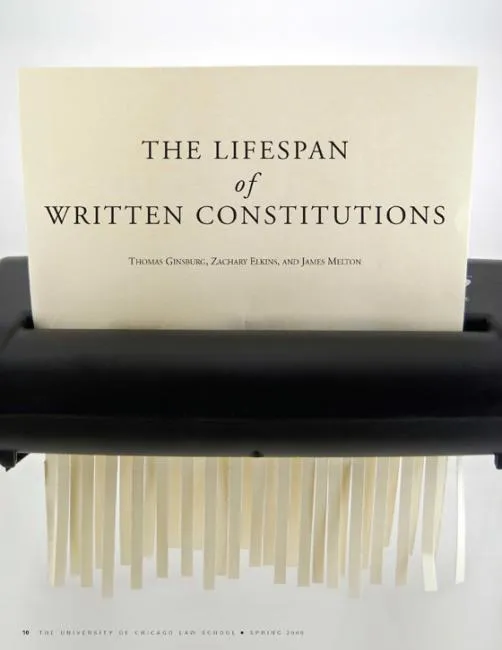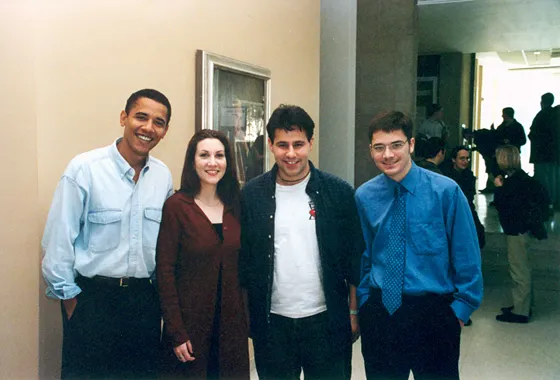Law Review Marks Demisesquicentennial

So far as I know, there is nothing in any other professional group which remotely resembles this guild of students who, working harder than their fellows, manage to cooperate sufficiently to meet the chronic emergency of a periodical. . . . The resulting standards often become so high that the contributed articles by law teachers and practitioners are markedly inferior to the student work, both in learning and in style, and, in fact, often have to be rewritten by the brashly serious-minded student editors.*
—David Reisman, “Some Observations on Law and Psychology” (19 U. CHI. L. REV. 40 [1951])
*Amen. [Ed.]
Conversations with past editors of the University of Chicago Law Review reveal an appreciation of Reisman’s observation and the footnoted affirmation of the Editor-in-Chief, one Abner Mikva, ’51. The editorial work required for Law Review submissions, as for those to any academic publication, run the gamut from straightforward cite checking to full-on research assistance. That this particular academic publication is a student-edited periodical is what former Dean and Professor Emeritus Gerhard Casper referred to as “one of the most startling characteristics of American legal scholarship,” which provides the “means for achieving the depth of understanding and fidelity to one’s materials that make up some of the essence of a learned profession” (50 U. CHI. L. REV. 405 [1983]).
Dawn Matthews, Business Manager of the Review since 1986, affirms that in fact, high-quality submissions are always abundant, thanks to the Review’s longstanding reputation of excellence. Now celebrating its seventy-fifth year, the Review first appeared in 1933, thirty-one years after the Law School offered its first classes. Although Joseph Beale, the first Dean of the Law School, and William Rainey Harper, the first President of the University, had wanted to establish a law review sooner, the small size of the faculty, the work accompanying the organization and early operations of the school, and, most important, the cost of publication delayed the venture.
Despite the delay, the journal had an illustrious beginning. Staff members of that first Law Review included Edward Levi, Stanley Kaplan, and Abraham Ribicoff. Authors of articles appearing in volume 1 included William O. Douglas, Charles E. Clark, Charles O. Robory, Robert Hutchins, Joseph Beale, and E. W. Hinton. Over the next eight years, the Law Review grew in stature. Contributing authors included Harry A. Bigelow, Roscoe Pound, John H. Wigmore, and Samuel Williston. Student members included Bernard Meltzer, Harry Kalven, Albert Ehrenzweig, and Wally Blum (who is said to have edited the Law Review at Jimmy’s, beer in hand).
Volume 10 marked the entry of the United States into World War II. A staff of just two students produced the first of the four issues. Starting with the fourth issue of volume 10 and continuing through volume 13, Professor Ernest Puttkammer, Faculty Advisor and now Editor-in-Chief, kept the Review going nearly singlehandedly.
After the war, the Law Review returned to the students. Since then it has continued to serve as a forum for the expression of ideas of leading professors, judges, and practitioners, as well as students, and as a training ground for University of Chicago Law School students. Prominent former members include Judges Danny Boggs, Robert Bork, Frank Easterbrook, Douglas Ginsburg, Abner Mikva, Michael McConnell, and David Tatel, and Senator Amy Klobuchar. The list of Supreme Court Justices published includes Brennan, Clark, Douglas, Frankfurter, Scalia, and Stevens.
Those who have worked on the Law Review recall an intense but positive experience, including current University of Chicago faculty. According to Todd Henderson, ’98, “Two of the most important traits of any good lawyer are the ability to distinguish between good and bad arguments, and an attention to detail. Being a law review editor gives you an opportunity to practice both of these skills in ways that stay with you for years.” Geoffrey Stone, ’71, notes that “the experiences of writing a published comment under close editorial supervision by other students and then serving as Editor-in-Chief were pivotal in my career. It was in this context of my work on the Law Review that I first truly fell in love with the idea of legal scholarship.” Former Book Review Editor Anup Malani, ’00, remains sympathetic to the pressures of law review work. He recalls the challenges when busy academics would miss their deadlines or submit reviews that veered off topic. Now on the submitting side, “I try to remember that when I deal with law review editors today,” says Malani.
Beyond the professional benefits, work on the Law Review represents a strong shared experience for staff members. Just scanning the Class Notes section of the Record provides ample evidence that long-lasting personal and professional connections are often forged. Malani, who was surprised to find the atmosphere of the Law Review office to be “really friendly—not really competitive,” counts his friendships with fellow editorial board members among his most enduring. It also connects him with Chicago Law faculty colleagues. In addition to Henderson, Stone, and Easterbrook, Professors Jacob Gerson and Randal Picker are fellow Chicago Law Review alums.
Changes in the demographics of the Law School over the last decade or so have brought equivalent changes to the environment of the journals office. Once a bastion of young, single men, the Review staff is now more diverse in age and gender. According to Matthews, staff members’ spouses, partners, and children stop in for visits and food deliveries and, collectively, form a kind of support system for single staff members as well.
In honor of the demisesquicentennial, Volume 75 included essays in tribute to the five most influential articles appearing in the publication to date, as selected by members of the Volume 75 Editorial Board. In Issue 1, Geoffrey Stone writes on “Equality as a Central Principle in the First Amendment,” by Kenneth L. Karst; in Issue 2, Richard A. Nagareda, ’88, comments on “The Contemporary Function of the Class Suit,” by Harry Kalven Jr. and Maurice Rosenfield in his article “Class Actions in the Administrative State: Kalven and Rosenfield Revisited”; in Issue 3, Martha Nussbaum highlights “Jurisprudence and Gender,” by Robin West, in her essay “Robin West, ‘Jurisprudence and Gender’: Defending a Radical Liberalism,” and David A. Strauss contributes “On the Origin of Rules (with Apologies to Darwin): A Comment on Antonin Scalia’s ‘The Rule of Law as a Law of Rules’”; in Issue 4, Albert W. Alschuler offers “Studying the Exclusionary Rule: An Empirical Classic” in tribute to “Studying the Exclusionary Rule in Search and Seizure,” by Dallin Oaks. These essays and the original articles are available on the Law Review website.


